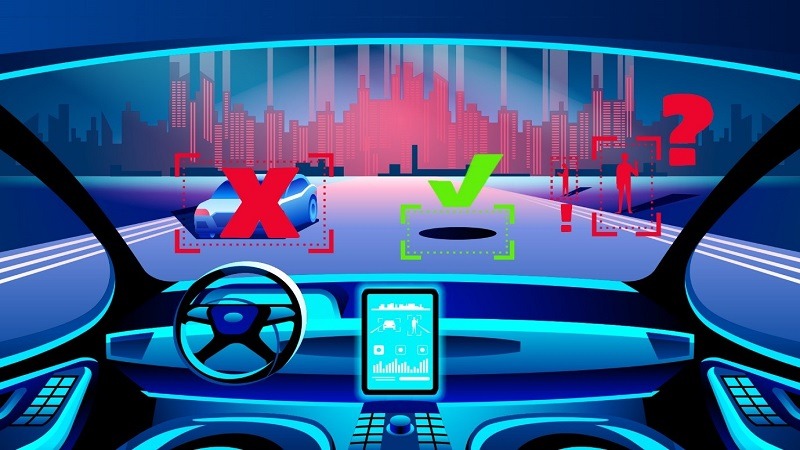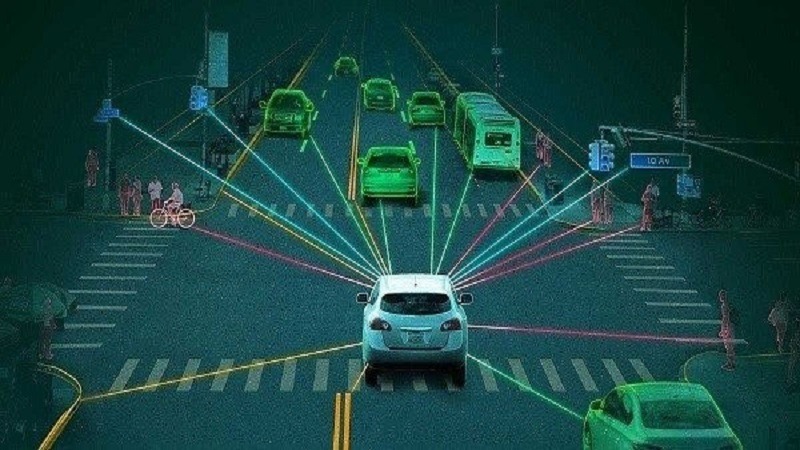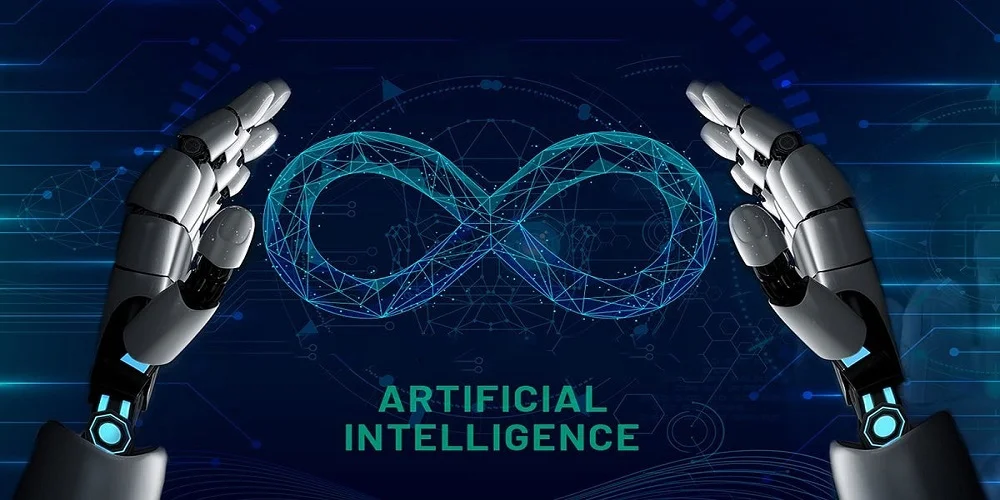Until recently, self-directed vehicles were seen as a visionary concept with a low probability of materializing. Although they now not yet prevalent on roadways, it is worth noting that the technology needed for their application is completely industrialized and operative. The change of self-driving cars has been made possible with only Artificial Intelligence (AI) technologies. AI to drive autonomous vehicles provide with a detailed importance on learning and computer visualization. Autonomous vehicles, normally called self-driving cars, use the best Artificial Intelligence algorithms. The use of this technology has significant potential in augmenting road safety, mitigating traffic congestion, and minimizing fuel usage.
AI To Drive Autonomous Vehicles – Fundamental Aspects
The incorporation of Artificial Intelligence in contemporary automobiles has been a prevalent phenomenon for a considerable duration. The inception of the intelligent driver support method may be traced back to the implementation of know-how that actively monitors the immediate setting of a vehicle. It provides assistance to the driver and issuing alerts in the event of emergencies or potential accidents. With the use of AI to drive autonomous vehicles enable drivers to make use of various solutions such as:
- Emergency braking is a critical safety feature that may prevent accidents by using the maximum braking capacity of a vehicle. An illustrative instance of this is Volvo’s Collision Warning with Autonomous Braking (CWAB) system, which effectively applies full braking force to halt the automobile and avert potential collisions.
- Night vision systems use thermographic cameras to enhance visibility in low-light or adverse weather situations. Mercedes provides a solution of this kind.
- Improved communication and notifications: Voice-activated commands, weather notifications, and other related features.
- Lane control systems are designed to provide drivers with notifications when their vehicle deviates from its designated lane. BMW provides such assistance.
However, this is only the first stage. AI voice assistants have grown ubiquitous, particularly in high-end automobiles, so becoming familiar to most individuals. Advancing the discussion, it is noteworthy that contemporary technological advancements have provided us with the necessary tools to integrate AI to drive autonomous vehicles. Therefore, enabling them to operate autonomously with a complete absence of human intervention.
Artificial Intelligence Drives Self-directed Cars

For a car to achieve autonomy, it is indispensable that it preserves a continuous cognizance of its situation. Autonomous cars need the implementation of reliable and robust measures that arrange safety, security, and prompt responsiveness. These measures must possess the capability to swiftly make judgments by leveraging a comprehensive comprehension of the driving surroundings. Comprehending the driving environment necessitates the acquisition of a substantial volume of data via a diverse array of sensors distributed throughout the vehicle. This data is then analyzed and interpreted by the autonomous driving computer system.
Road testing is often regarded as the definitive indicator of safety. However, it is worth noting that road tests are generally conducted at the last phases of the design process, exposing human lives to potential hazards that researchers want to mitigate. No engineer would willingly assume the responsibility of conducting a road test that resulted in loss of life or significant property damage, all in the pursuit of demonstrating the security of a certain technology. The AI to drive autonomous vehicles needs a flow of data and directions to enable instantaneous decision-making grounded on intricate datasets.
Presently, there are working self-driving vehicles that have demonstrated success on public roads. However, it is important to note the attainments of such initial vehicles could be attributed to their extensive exposure to a specific route, which they negotiate frequently over a lengthy period. Through this repetitive process, these vehicles acquire comprehensive knowledge of the way and make thorough maps, which subsequently serve as integral components of their self-navigation systems.
Recent Advancements in AI To Drive Autonomous Vehicles

The automotive industry has seen a significant and profound technological transformation over the last decade, surpassing the advancements witnessed in most other consumer products. In previous decades, gasoline-powered cars and those managed by humans were widely prevalent. However, contemporary autonomous vehicle technologies have emerged, characterized by their exclusive use of all-electric engines. An extensive array of forward-thinking driver assistance systems and autonomous driving capabilities.
Nevertheless, the expansion of such innovative characteristics did not materialize spontaneously. Rather, it is attributable to the advent of a novel technological framework that has made various degrees of autonomy feasible. This article aims to provide an in-depth analysis of harnessing AI to drive autonomous vehicles and technologies now used in automobiles.
Sensor’s Devices
To attain various degrees of self-sufficiency, it is significant for new vehicles to own the competence to get data from their nearby environment. The explosion of autonomous car sensor numbers and types has seen a substantial increase over the last period. Hence demanding to harness AI to drive autonomous vehicles required for proper execution of this job.
Machine Learning
In addition to the acquisition of environmental data, it is important for autonomous vehicle technologies to effectively and precisely evaluate these same data sets. Machine Learning algorithm using linear algebra plays a crucial part in autonomous driving by analyzing sensor data to get insights about the surrounding environment and facilitating real-time decision-making.
The precision and dependability of these interpretations are fundamental in guaranteeing the security and effectiveness of autonomous vehicles. Furthermore, ongoing progress is being made in the fields of Machine Learning and AI to drive autonomous vehicles in precisely examining datasets. Hence, increasing their competence and reliability in navigating roadways.
READ – Advanced Machine Learning Techniques in Python
Concept of “Enhanced Driver Experience”
The integration of AI technology in smart cars allows for the provision of individualized infotainment experiences to both passengers and drivers. Therefore enhancing the safety, intelligence, and overall enjoyment of their travel. For example, harnessing AI to drive autonomous vehicles can comprehend the local dialects of users and execute various functions. It includes but not limited to playing music, providing navigational guidance, and regulating the temperature inside the vehicle.
Advancement of AI To Drive Autonomous Vehicles in the Industry
As per the automotive AI market examination, the predictable worth of this marketplace is projected to be $800 million in 2020. It is expected that this market will see considerable growth and is projected to reach almost $11,000 million by the year 2025, displaying a Compound Annual Growth Rate (CAGR) of around 40.5%.
According to the forecast, there is predicted to be an important increase in the installation rate of AI to drive autonomous vehicles and newly manufactured cars. Precisely, it is expected that this rate will see a considerable growth of 109% by the year 2025, in contrast to the comparatively lower adoption rate of 8% observed in 2015. A driverless car uses images for referencing, radar, and a camera to reach from one point to another without any human driver or operator.
Companies like Audi, BMW, GM, and Tesla use AI to drive autonomous vehicles and complement such innovations by exploring outlets like local used car dealerships in EchoPark Houston, where high-quality used cars are easily accessible for enthusiasts of traditional vehicles. This combination of AI advancements and existing dealership networks is key to the ongoing transformation in transportation. The research department has already invested lots of money and time to get positive results. Automobile engineers and AI developers are working together to implement AI features properly in self-driven cars.
Engineers work on the car features, and AI developers feed the data into the automobile program so that it works effectively. A data set is fed to the machine program of these cars to identify the set pattern of images. The engineers study the environmental area around the car and feed the images and data according to that. The car program makes decisions based on fed data and real-time situations.
Benefits of AI to Drive Autonomous Vehicles
Driverless cars have a promising future that will give users an excellent traveling and commuting experience. One more crucial benefit of using AI to drive autonomous vehicles is a reduction in the consumption of fuel, resulting in a better environment to live in. The environment-friendly cars that AI drives will be fuel efficient and high in mileage resulting in cost efficiency for the car owner.
These AI systems will also be safe and reliable for goods and public transportation. We are not saying that these cars are ready to use. It is in process, but we can rely on it completely after seeing the growth within a few years due to AI business solutions technology. Our future generations will be using such types of AI-based cars in their daily lives.
With the help of AI technology, the following can be done:
- Start and end destinations are set in the car program, with the help of which car software calculates the entire route option and time to be taken.
- A 3-D car map is created on the screen, which gives a 3D to the software up to a 60-metre range with the help of which self-driving cars run smoothly.
- A camera is set at the front and rear of the car to check the distance between the obstacles, which is easily calculated with A technology.
- The AI helps in decision-making and controls the action in the driving seat.
- The landmarks and lights are informed in advance so that the program decides while considering all this in mind.
Conclusion
In conclusion, the AI to drive autonomous vehicles have the volume to revolutionize transportation as we understand it. The future of self-driving cars motorized by AI is a terrifying outlook that holds incredible potential. With developments in tech and the integration of Artificial Intelligence, we are seeing a pattern shift in the automotive industry.



